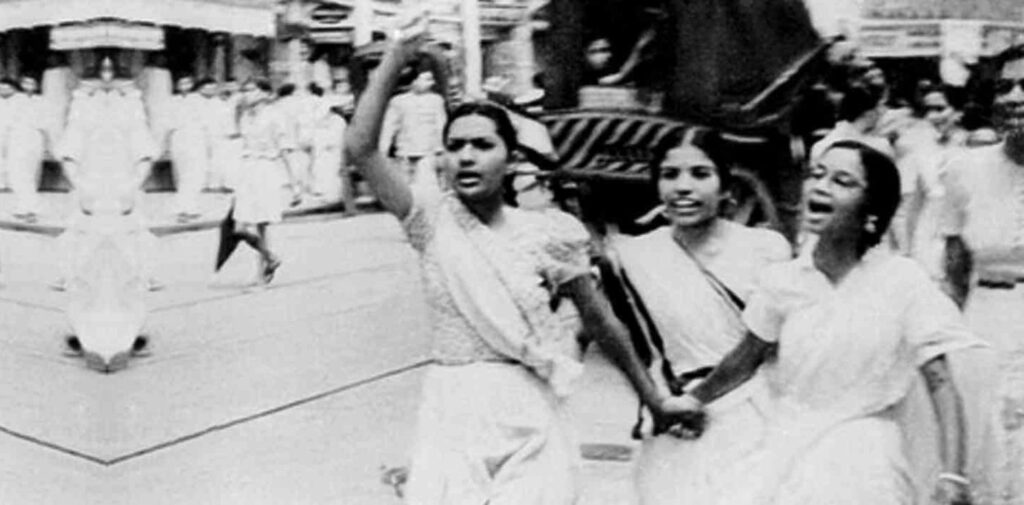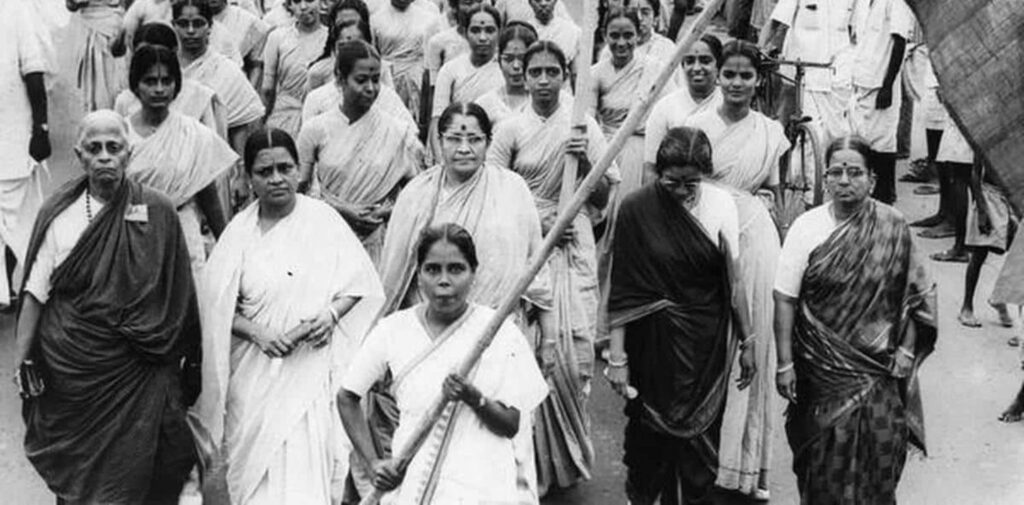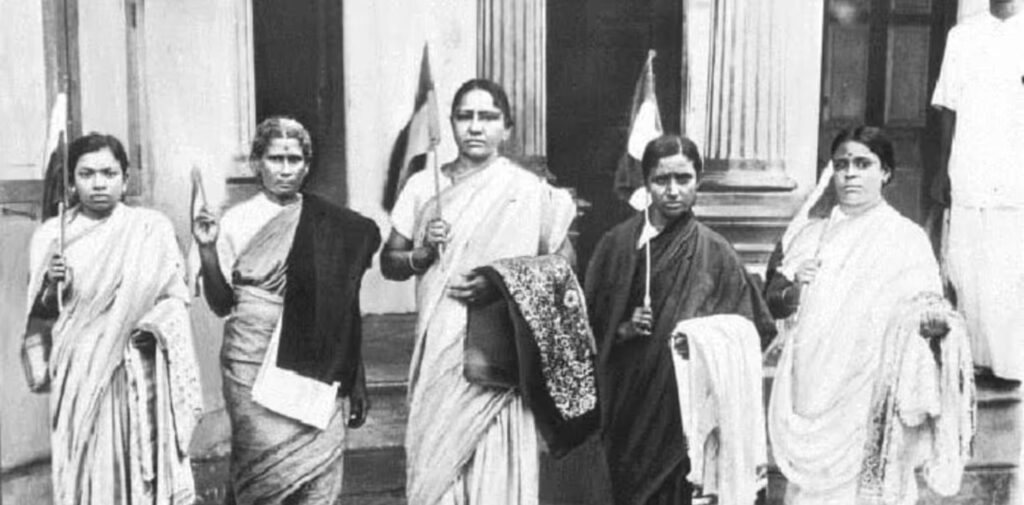The Quit India Movement, also known as the August Movement, was a pivotal moment in India’s struggle for independence. Launched by Mahatma Gandhi on August 8, 1942, it marked the intensification of the fight against British colonial rule. While men are often highlighted in history as the central figures in the freedom struggle, women played an equally crucial role in the Quit India Movement. Their contributions were diverse, ranging from participating in protests to supporting the movement through their efforts in their communities. In this article, we will explore the significant women in the Quit India Movement and how they helped shape the course of India’s fight for independence.
Women’s Role in the Quit India Movement: A Rising Force
Before delving into the specific contributions of women, it is important to understand the context of their involvement. Historically, women had been largely excluded from political and social activities in India, as they were often confined to domestic roles. However, during the struggle for independence, this changed, especially with the rise of the Indian National Congress and the influence of leaders like Mahatma Gandhi, who encouraged women’s participation in the national movement.
Gandhi’s philosophy of non-violence and his call for civil disobedience were ideals that appealed to many women. As the movement gained momentum in the 1930s and 1940s, women began to step out of their traditional roles and actively engage in the fight for India’s freedom. The Quit India Movement, with its call for immediate British withdrawal, provided women with the perfect platform to participate in the national struggle.

Key Contributions of Women in the Quit India Movement
1. Participation in Protests and Civil Disobedience
One of the most important ways women contributed to the Quit India Movement was by participating in protests and acts of civil disobedience. Across the country, women took part in processions, picketing, and other forms of non-violent resistance. In cities like Bombay (now Mumbai), Delhi, and Calcutta (now Kolkata), women marched alongside men demanding an end to British rule.
In places like Patna, women were seen carrying national flags, singing patriotic songs, and organizing protests that often led to their arrests. They defied British laws, refusing to cooperate with the colonial administration. Despite the harsh punishments and violent suppression of protests by the British, these women remained steadfast in their commitment to the cause.
2. Women as Leaders and Organizers
Women were not just participants; many took up leadership roles in organizing protests, spreading awareness, and motivating others to join the movement. Leaders like Aruna Asaf Ali, Kamaladevi Chattopadhyay, and Sucheta Kriplani became prominent figures in the Quit India Movement.
Aruna Asaf Ali, in particular, became an iconic figure in the movement. She was one of the first women to openly hoist the Indian national flag during the Quit India Movement. On August 9, 1942, when the Congress leaders were arrested, Aruna Asaf Ali led a large protest in Delhi, defying the British government. Her courage and leadership inspired countless women to join the fight for freedom.
3. Role in Underground Activities
As the British government cracked down on the Quit India Movement, many leaders, including the men, were arrested and imprisoned. At this time, women took on significant responsibilities by helping to carry out underground activities. They acted as messengers, carrying secret messages and information between revolutionary groups. These women risked their lives to keep the movement alive even in the face of intense repression.
Women also worked tirelessly to keep the morale of the people high during this difficult period. They provided food and shelter to those involved in the movement and helped organize logistics for protests. They played a key role in keeping the underground networks connected, ensuring the continuity of the movement despite the British government’s attempts to break it.

4. Support through Social and Cultural Work
Women also contributed to the Quit India Movement through their involvement in social and cultural work. They organized events, produced literature, and made speeches to raise awareness about the struggle for independence. Women like Sarojini Naidu, known as the “Nightingale of India,” used their poetry and speeches to inspire others to take part in the national movement.
In many regions, women also held cultural programs, such as music and theater, to keep the spirit of nationalism alive. These cultural activities played an important role in spreading the message of the Quit India Movement to a wider audience, especially in rural areas where traditional forms of resistance were less visible.
5. Contribution in Rural Areas
Women played an especially significant role in rural areas, where the Quit India Movement was less structured but no less important. In villages across India, women became the backbone of grassroots resistance movements. They mobilized local communities, helped in organizing boycotts of British goods, and raised awareness about the movement.
Rural women, often facing additional challenges such as poverty and illiteracy, displayed remarkable courage in their participation. They used their social networks to spread the message of the Quit India Movement and inspired those around them to take a stand against British colonial rule. Their work helped to strengthen the movement, especially in places where it may have otherwise struggled to gain a foothold.
6. Martyrs and Sacrifices
Many women made the ultimate sacrifice during the Quit India Movement. They were arrested, tortured, and even killed for their involvement in the protests. Some women, like Durga Bai, died while participating in violent clashes with British soldiers. These sacrifices were crucial in the overall success of the movement, as they symbolized the courage and determination of the Indian people to rid themselves of British rule.
Women like Usha Mehta also made great sacrifices. She ran an underground radio station that broadcasted messages of the Quit India Movement, keeping the people informed of the leaders’ actions and the progress of the movement. She was arrested and imprisoned, but her bravery and contributions were recognized long after her release.

The Impact of Women’s Involvement
The involvement of women in the Quit India Movement had a profound impact on Indian society. It not only showed the British that they could no longer rely on traditional social structures to control the masses, but it also changed the perception of women’s roles in Indian society.
By participating in the Quit India Movement, women proved that they were equal to men in their determination and patriotism. They demonstrated that women were not just confined to domestic roles but could take up leadership, fight for justice, and contribute to national causes. This shift in the social fabric of India laid the foundation for the feminist movement in the years that followed and contributed to greater gender equality in the country.
Moreover, the legacy of these women continues to inspire future generations of women in India. Their contributions have often been overlooked in mainstream historical narratives, but their courage and sacrifices remain an essential part of India’s struggle for independence.
Conclusion
The women in the Quit India Movement was crucial to its success. From participating in protests to providing underground support, women helped ensure that the movement remained strong and visible, even in the face of tremendous adversity. Their involvement was not just as passive participants but as leaders, organizers, and martyrs who contributed to India’s freedom in meaningful ways.
As we reflect on the history of India’s independence, it is important to remember the significant contributions of women, who played an integral part in the struggle for freedom. Their courage, resilience, and sacrifices paved the way for a free India, and their legacy continues to inspire women across the country today. The Quit India Movement stands as a testament to the power of unity, resilience, and the indomitable spirit of the people of India—including its women.




